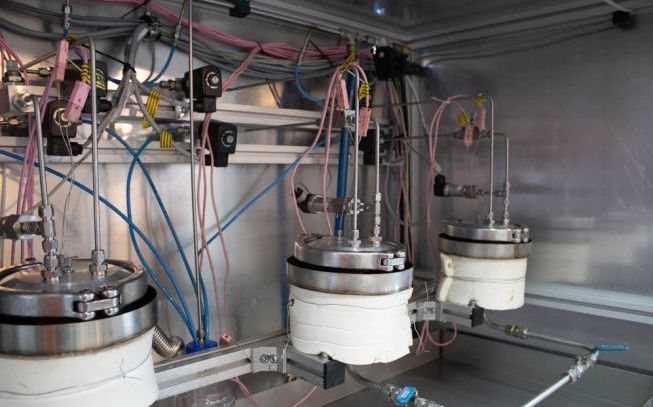Sensor-based rapid method enables estimation of storage duration
03 Mai 2023 – A newly developed method makes it possible to determine the storage stability of middle distillates such as heating oil or diesel fuel. The method is based on a rapid procedure (BigOxy) combined with a sensor for online measurement of selected data. Using elevated temperature and pressure, the BigOxy method allows effects in fuels that would otherwise take months or years to show up, within hours to days. The prediction tool was developed by OWI Science for Fuels gGmbH in a research project.
A newly developed method makes it possible to determine the storage stability of middle distillates such as heating oil or diesel fuel. The method is based on a rapid procedure (BigOxy) combined with a sensor for online measurement of selected data. Using elevated temperature and pressure, the BigOxy method allows effects in fuels that would otherwise take months or years to show up, within hours to days. The prediction tool was developed by OWI Science for Fuels gGmbH in a research project.
The background to the development is that better building insulation and higher efficiency of burners or engines reduce consumption and increase the storage period. Knowledge of the storage stability of fresh middle distillates and also the remaining stability of already stored fuels is therefore becoming more important.
Determination of the storage stability of middle distillates
From the fuel data collected in the project, it was possible to develop a model of storage stability using a mathematical function, with which the course data of a storage can be approximately predicted. For the prediction of the storage stability of middle distillates, the results of an input analysis, the course of the rapid aging (online measurement of the sensor data) and the analysis values at the end of the rapid aging have to be entered into the model. Together with an indication of the storage temperature and the expected target storage period, values can then be predicted as they are likely to occur in long-term storage. The prediction tool then outputs the start and expected end values, as well as the time of the largest expected change in the composition of the fuels.
The model is already suitable as a basis for further investigations, and depending on the application, the accuracy that can be achieved so far is also already sufficient to obtain valuable information. The accuracy of the model could still be improved in further test series, and for some of the conversion factors it may still be necessary to differentiate between the various fuel types.
A total of 14 different fuels or mixtures thereof were investigated. These included 4 different low-sulfur fuel oils according to DIN 51603-1, rapeseed methyl ester, hydrogenated vegetable oil, a paraffinic synthetic product and a fatty acid methyl ester produced from used cooking oils. With the help of the forecast data, it will be possible to better assess the quality and possible uses of fuels in the future. In addition, the method also offers a way to map and assess the long-term effects of additives in a short time, which can be very useful in product development.
The IGF project 21047 N of the research association DGMK German Society for Sustainable Energy Carriers, Mobility and Carbon Cycles e.V.– DGMK, Große Elbstraße 131, 22767 Hamburg, was funded through the AiF as part of the program for promoting joint industrial research (IGF) by the German Federal Ministry for Economic Affairs and Climate Action based on a German Federal Parliament resolution.







